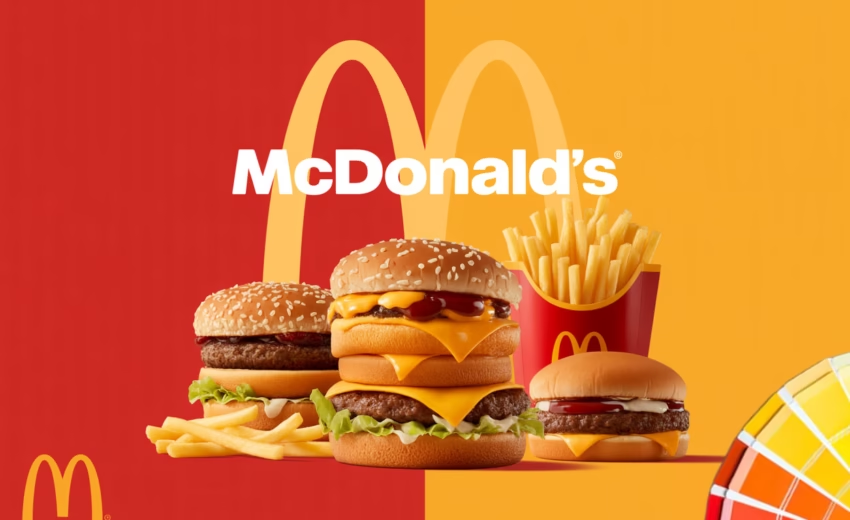
When you think of McDonald’s, chances are two things instantly pop into your head: the golden arches and that unmistakable red backdrop. These colors aren’t just about brand recognition—they’re a calculated move rooted in psychology and marketing science. Fast food giants like McDonald’s understand that colors influence emotions, decisions, and even appetite. The restaurant colors they choose can directly affect how quickly we order, how much we eat, and how happy we feel afterward.
The Psychology Behind Red & Yellow
Red and yellow are not random choices. Here’s why they dominate the fast food industry:
- Red: Stimulates appetite, increases heart rate, and creates a sense of urgency. That’s why you’ll find it in “limited-time offer” banners and “Order Now” buttons.
- Yellow: Associated with happiness, friendliness, and optimism. It also grabs attention faster than most colors, making it perfect for catching your eye from the road.
When paired, red and yellow work like a marketing magnet—triggering hunger and speeding up decision-making. This is crucial in the fast food world, where quick turnover and impulse purchases drive profit.
How McDonald’s Implements the Color Strategy
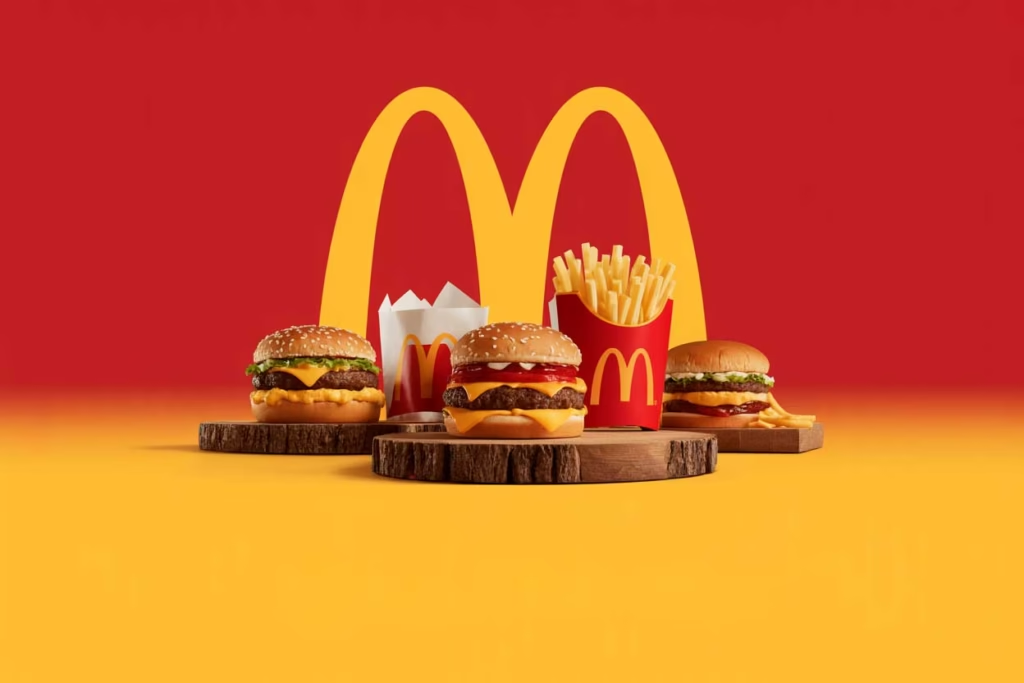
McDonald’s doesn’t just use these colors in its logo—they integrate them across their entire customer experience:
- Signage & Exterior: The yellow arches on a red backdrop are visible from hundreds of meters away.
- Menu Design: Promotional boards and menus use red highlights for urgency (“New!” or “Hot!”) and yellow tones for value meals.
- Packaging: From french fry boxes to ketchup packets, the red-and-yellow combo reinforces branding even after you leave the store.
- Interior Accents: Historically, McDonald’s used more red to encourage quick dining. Today, many locations balance it with neutrals to make spaces feel cleaner and more modern.
Fast Food Color Choices Around the World

While McDonald’s sticks to red and yellow globally, other chains tweak the formula:
- KFC: Red and white for freshness and boldness.
- In-N-Out Burger: Red and yellow, similar to McDonald’s, but with palm tree graphics for a California vibe.
- Burger King: Red, yellow, and blue—a mix of energy, friendliness, and trust.
Cultural note: In some countries, McDonald’s has even adapted its restaurant colors to match local tastes—such as more green in Europe to emphasize freshness and environmental responsibility.
When Red & Yellow Doesn’t Work
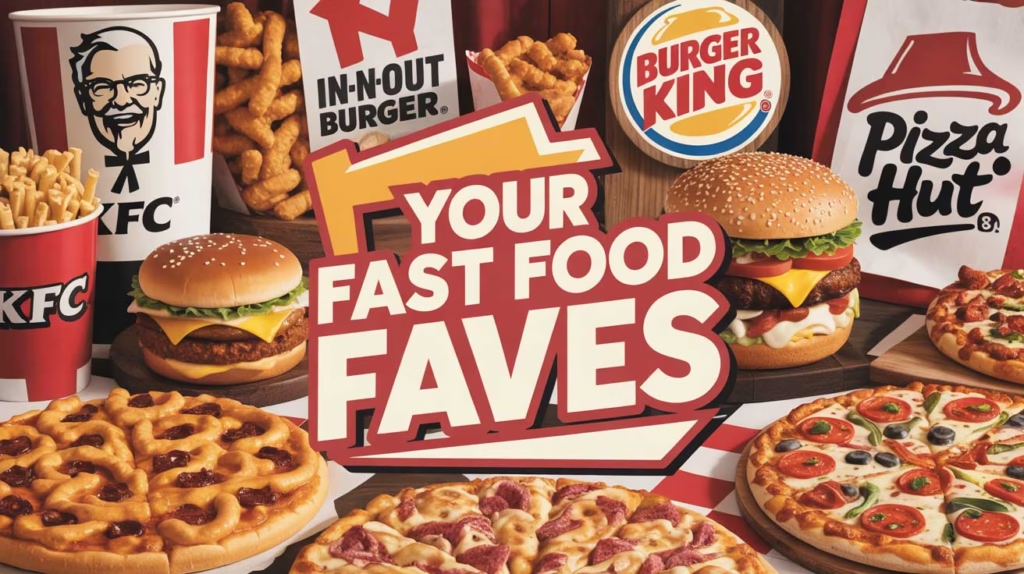
Not every food business benefits from this energetic duo:
- Fine Dining Restaurants: Prefer deeper, richer colors (black, gold, navy) to signal luxury and slower dining.
- Healthy or Organic Cafés: Use greens, browns, and earthy tones to signal natural and wholesome products.
- Dessert Shops: Often use pastels or bright pinks for sweetness and fun.
Applying These Lessons to Your Restaurant or Food Brand
If you’re building a food business, consider:
- Speed vs. Comfort: Red and yellow are great for quick service, but softer tones work better for sit-down restaurants.
- Takeout & Delivery: Your packaging colors should be bold enough to stand out on delivery apps and in-store shelves.
- Shelf Appeal: Snacks and packaged foods benefit from the same psychology—bright, high-contrast colors grab shoppers’ attention.
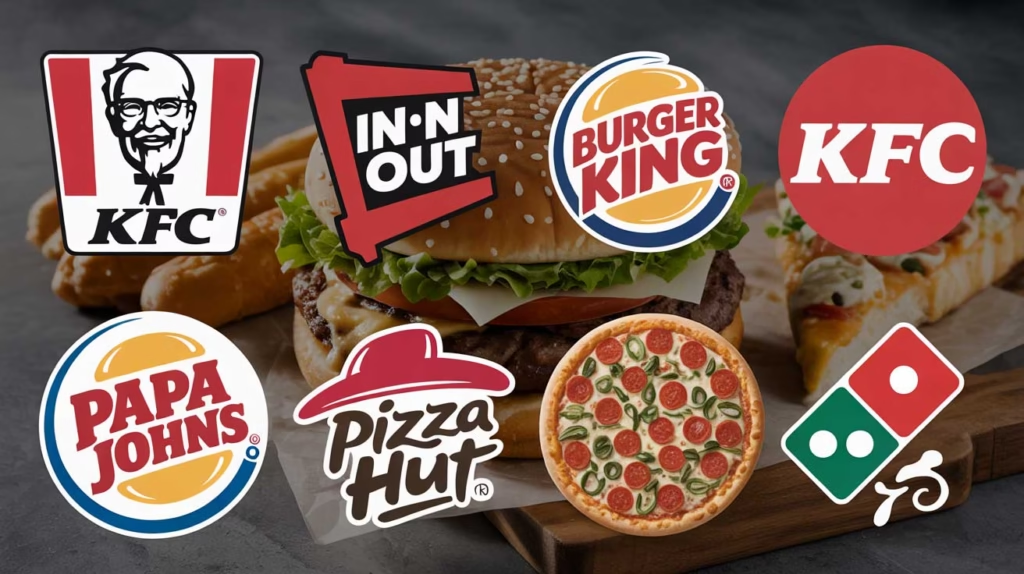
Like to know about our services? Feel free to visit our Service Page
Color Psychology Chart for Fast Food Branding
| Color | Emotional Effect | Best For | Example Brands |
|---|---|---|---|
| Red | Stimulates appetite, urgency, excitement | Limited-time offers, core branding | McDonald’s, KFC |
| Yellow | Optimism, friendliness, attention-grabbing | Value meals, outdoor signage | McDonald’s, In-N-Out |
| Orange | Warmth, affordability, creativity | Fast casual, snack brands | Fanta, Whataburger |
| Green | Freshness, health, eco-friendliness | Organic/healthy restaurants | Subway, Sweetgreen |
| Black | Luxury, sophistication, exclusivity | Premium dining, coffee shops | Starbucks Reserve |
| White | Cleanliness, simplicity | Modern cafés, health bars | Shake Shack interiors |
Conclusion
McDonald’s red and yellow branding isn’t just iconic—it’s strategic. The restaurant colors they chose are proven to trigger hunger, speed up decision-making, and make their brand instantly recognizable worldwide. Whether you’re starting a snack business, opening a café, or launching a fast food chain, understanding color psychology could be the difference between blending in and standing out.
Feel free to visit our portfolio on Behance & Dribbble
#ColorPsychology #FoodBranding #FastFoodMarketing #McDonaldsBranding #RedAndYellow #RestaurantDesign #BrandColors #MarketingStrategy #AppetiteTrigger #PackagingPsychology



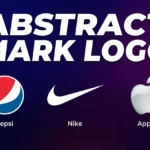
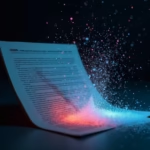

Loretta Vinall September 22, 2025
My partner and I stumbled over here different website and thought I might as well check things out. I like what I see so now i am following you. Look forward to exploring your web page yet again.
sprunki game September 27, 2025
Sprunki Incredibox is a fantastic twist on the original with fresh beats and visuals. It’s easy to play yet full of creative potential. Check out Sprunki for a fun, musical experience that keeps you coming back!
Porn Dodo October 5, 2025
Wishing you happiness every day.
sprunkiretake October 23, 2025
That’s a great point about musical creativity being accessible to everyone! I’ve been checking out Sprunki Retake – the drag-and-drop interface is surprisingly intuitive, even on mobile. Really neat concept!